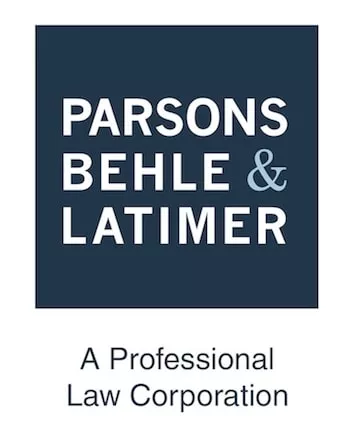Recently, in Nevada: The Nevada Supreme Court issues a ruling on blue-penciling non-competes
Blue-penciling? Please explain.
Nevada has a unique approach to non-competes. While still legal in the state (though that status remains questionable given the national trend), in Nevada, non-competes are subject to strict statutory requirements. Under Nevada law, a non-compete is void and unenforceable if 1) it is not supported by valuable consideration; 2) it imposes a restraint greater than is required for the protection of the employer; 3) it imposes an undue hardship on the employee; and 4) it imposes restrictions that are inappropriate in relation to the value of the consideration supporting the non-compete. NRS 613.195(1) ("Subsection 1"). If a court, evaluating a challenged non-compete covenant, finds it is supported by valuable consideration, but its restrictions in time, geography or scope of activity are unreasonable or pose an undue hardship on the employee, the court may revise the non-compete "to the extent necessary and enforce the covenant as revised." NRS 613.195(6) ("Subsection 6"). This is known as "blue penciling."
So, when does a court blue-pencil?
In Tough Turtle Turf LLC v. Scott, the Supreme Court evaluated a lower court decision wherein the district court found the non-compete in question was "overbroad, oppressive, excessive in scope, and one-sided in Tough Turtle's favor." 139 Nev. Adv. Op. 47, 537 P.3d 883, 888 (2023). On this basis, the district court found it was "unable" to revise the non-compete, so declined to enforce it. However, the lower court did not undertake an analysis of whether it was possible under Subsection 6 to revise the non-compete to make it enforceable. This failure was in error, the Supreme Court held.
The Supreme Court found that Subsection 6, when read together with Subsection 1, does not require that a district court always revise a non-compete. In fact, consistent with established Nevada law, a court "may refuse to modify a contract that is so lacking in essential terms that the court would have to provide them." The Supreme Court expressly rejected a holding from the U.S. District Court that it is a court's responsibility under Subsection 6 to "draft" a reasonable, enforceable non-compete.
However, the Supreme Court went on, "overbreadth alone will not render the covenant unenforceable if the restrictions can be modified under subsection (6) so that they are reasonable and do not impose an undue hardship on the employee or a restraint greater than necessary for the employer's protection." Accordingly, the Supreme Court sent the case back to district court to evaluate whether blue-penciling could render the non-compete enforceable.
What is an employer to do?
The ruling that overbreadth does not automatically render a non-compete unenforceable is likely beneficial for the enforcement of non-competes by employers. Of course, it is preferable to avoid a dispute regarding overbreadth all together, and for this reason, having counsel review non-competes is advisable. Broadly speaking, non-competes should be narrowly tailored in time and geography. The scope should also be tied to the specific industry in question and how it is related to the protection of the employer's business.
In case you missed it: The NLRB found employees may record employers without consent if the employees fear of retaliation
In February 2023, the NLRB issued a ruling on a contentious finding that Starbucks' termination of two employees was impermissibly retaliatory. Starbucks Corp., 372 NLRB No. 50 (Feb. 13, 2023). While the decision drew attention for the Board's holding that the employees be reinstated with backpay, it also reached another important holding: that state laws or employer policies against recording workplace conversations are preempted by Section 7 of the National Labor Relations Act (NLRA) when an employee records a conversation in furtherance of their Section 7 rights.
Section 7 is broadly interpreted by the NLRB
Section 7 of the NLRA provides in part that employees (whether unionized or not) have the right to "engage in other concerted activities for the purpose of collective bargaining or other mutual aid or protection." In recent years, the NLRB has interpreted the Act broadly to cover a wide range of employee activities. In the Starbucks decision, the Board extended Section 7 to protect employees' rights to record their managers even if such recordings violated state law or company policy. Specifically, the Board found that recording is a protected activity where employees had "concern" their employer (via a vi their manager) was "seeking to retaliate against a protected activity." Since the activity at issue was protected by Section 7, the Board went on to find neither the company's no-recording policy nor state law formed a basis for termination or denial of reinstatement. Critically, the Board found that state law was preempted by Section 7.
How could the NLRB decision impact Nevada employers?
Employers should be aware that employees recording telephone conversations in furtherance of their Section 7 rights, which are broad, may rely on the NLRB decision to argue for the use of such recordings as evidence. Employees may also argue that employers are precluded from terminating employees for violating state recording laws or workplace no-recording policies if the recordings are in furtherance of an employee's Section 7 rights.
Looking ahead: The frequently applied Chevron deference test is under review
Earlier this month, the United State Supreme Court considered two cases involving whether to overturn the long-standing Chevron deference standard. See Loper Bright Enterprises v. Raimondoand Relentless, Inc. v. Department of Commerce.
What is Chevron deference?
Under Chevron deference, when a federal law is unclear or subject to multiple interpretations, the relevant agency will interpret the law, and the court will accept such interpretation as long as it is reasonable and consistent with the purpose of the statue. Effectively, courts will defer to agency interpretation. Practically speaking, agency interpretation can come in many forms including publishing informal guidance, dispute resolution with a quasi-judicial opinion, or issuance of a formal regulation. These actions are meant to "gap fill" federal law and are often informed by experts in the field who have in-depth technical expertise related to the subject matter of the statute at hand. In evaluating whether Chevron deference applies to agency interpretation, courts undertake a two-step analysis 1) whether the statute is ambiguous; and 2) whether the agency interpretation is reasonable; (often called the Chevron two-step, not dissimilar from the cha-cha-cha).
Among the arguments for maintaining Chevron are that in an era of heavy docket loads, relying more on the courts for this type of statutory interpretation may further burden an already weighed-down court system and lead to inconsistent state-by-state application of federal law. On the other hand, proponents of overturning Chevron argue that it abrogates from the courts their essential duty – interpreting the law – and insist that it has led to agency overreach.
What does this mean for employers?
From a substantive perspective, large swaths of current labor and employment law stems from administrative interpretations. For example, the National Labor Relations Board's (NLRB's) extensive rule-making is given Chevron-like deference. Similarly, the Department of Labor's (DOL's) Wage and Hour Division is extended deference on a number of key issues, including the DOL's interpretation of the Fair Labor Standards Act's (FLSA's) white collar exception. Without Chevron deference, courts may be willing to re-interpret agency interpretations of a myriad of employment statutes.
Additionally, depending on whether and how Chevron is overturned, agencies may re-think the way they issue interpretations and the scope of such interpretations. Legal scholars speculate that if agencies know their gap-filling may be subject to more robust judicial review, they will limit their interpretations. Congress may also be encouraged to do more gap-filling when legislation is passed or in response to issues that arise. Of course, given the near-constant gridlock in Congress, the reality of such speculation is questionable. For the moment, Parsons Behle will track the case and encourages employers to continue to follow current agency interpretations of statutes relevant to their businesses or consult counsel with any questions.
The content of this article is intended to provide a general guide to the subject matter. Specialist advice should be sought about your specific circumstances.

